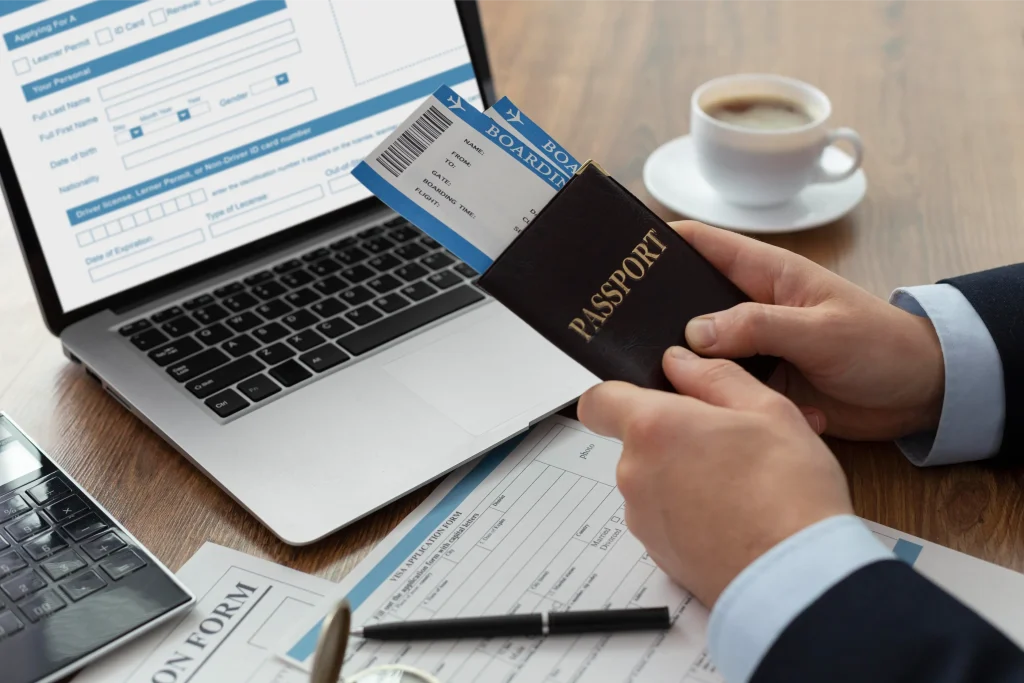Moving or taking a job in the UAE? You’ll need to make sure your foreign degree is officially legalized. The UAE government requires any degree certificate obtained outside the UAE to be attested before it will accept it for visas or licensing.
In other words, you must get government stamps confirming your degree’s authenticity. Attestation proves that the seals and signatures on your diploma (or transcript) are genuine.
In practical terms, UAE employers and immigration officials won’t process your visa without it. This blog explains the process step by step so you can breeze through Education certificate attestation UAE confidently.
What is Degree Certificate Attestation?
“Attestation” (also called legalization) is simply an official stamp or seal that verifies your document is real. For an education certificate, attestation means multiple authorities sign off on your diploma: e.g. a notary, an education board/HRD, the country’s foreign ministry, and finally a UAE embassy/consulate.
Each stamp confirms the previous one is valid. The end result: UAE officials know your degree was truly issued by an accredited institution. Education certificate attestation UAE is basically a chain of trust from your college all the way to UAE’s Ministry of Foreign Affairs (MOFA), so that your qualification is accepted for jobs, professional licensing, or residency.
Step-by-Step Attestation Process
The general flow is “Home country authorities → UAE Embassy/Consulate → UAE MOFA.”
First, you get stamps from your own government (state or national) confirming your degree is valid. Next, the UAE diplomatic mission in your country adds its stamp. Finally, once in the UAE (or via UAE’s online portal), the UAE Ministry of Foreign Affairs (MoFA) adds the last seal.
Official UAE guidance notes that documents issued abroad must first be attested by the issuing country’s foreign ministry and then by a UAE embassy or consulate. MOFA UAE can then register the attestation digitally.
In practice, the steps are:
- Home-country legalization: Have your degree (and marksheets/transcripts if required) authenticated by relevant authorities in your country. For example, in many places you first see a notary or school registrar. In India, education documents usually go to the State Education Department or HRD (sometimes via an SDM officer) for authentication. (Some countries skip this step if they issue apostilles instead.)
- Ministry of Foreign Affairs (in issuing country): Next, your document (now stamped by the state/Education Dept.) goes to the Ministry of External Affairs (or foreign ministry) of your country. In India this is MEA Delhi; in other countries it may be MFA or Apostille office. For example, MEA attestation in India is mandatory.
- UAE Embassy/Consulate: After MEA, submit the documents to the UAE Embassy (in New Delhi) or UAE Consulate (e.g. Mumbai) for attestation. The UAE mission ensures it trusts the earlier stamps. VFS Global (which handles UAE attestations in India) confirms that educational certificates must be attested by the issuing country’s HRD, MEA and then the UAE Embassy. (If you’re elsewhere, use the corresponding UAE diplomatic post.)
- UAE MOFA (final step): Finally, once you arrive in the UAE or via UAE’s e-services, upload or present the already-attested documents for UAE MoFA attestation. This is often done online or at a service center. UAE MOFA will give the final legalization stamp (now digital in most cases) so your certificate is valid in the UAE. In short, think “State Auth → National Auth → UAE Embassy → UAE MOFA” for India.
Each country’s sequence can vary (for personal documents like birth certificates it’s different, but for degrees it’s as above).
In India specifically, the normal path is: Notary (if needed) → State HRD/SDM attestation → MEA → UAE Embassy/Consulate → UAE MOFA.
For example, one source outlines: “Educational Documents must be pre-authenticated from the state HRD, then the Ministry of External Affairs, and finally attested by the UAE Embassy/Consulate”. (If a certificate is private or needs translation, additional steps may apply.)
Required Documents
You’ll need to gather several papers (in original and copy form) for attestation. Typically this includes your original degree certificate, plus any transcripts or mark sheets (all years) as required.
Also bring a copy of your passport (bio-data page) and UAE visa or entry stamp copy (if you have it). An authorization letter (if you’re using an agent) and a couple of passport-size photos are often needed. Here’s a quick checklist:
- Original Degree Certificate: The main document to attestate.
- Official Transcripts/Mark Sheets: (All years’ results) often required for education attestations.
- Completed Application Forms: The UAE attestation form or VFS application (filled-in).
- Passport Copy: Clear copy of your passport’s photo page.
- Passport Photos: Recent color photos (usually 2).
- Authorization Letter: A signed letter if someone else submits documents on your behalf.
- UAE Visa/Entry Stamp: If already inside the UAE or after landing, include your visa page or entry stamp copy.
- Fees & Cover Letter: Payment receipts for attestation fees, plus any cover letter as required.
According to UAE VFS guidelines, make sure you bring the “original documents to be attested” and the correctly filled application form, along with passport pages. Double-check the embassy’s website or your visa service provider’s instructions for any extra items (like birth certificates or power-of-attorney) so nothing is missing.
How Long Does It Take and What Does It Cost?
Expect attestation to take a few weeks, so start early. In India, MEA attestation alone can take about 3–7 business days, then the UAE Embassy another 5–10 days, and UAE MOFA about 10–12 days more. (Agencies often cite about 10 working days total for an education certificate, though processing slows if documents are incomplete.)
Fees vary by step. Roughly speaking, each stamp costs a few thousand rupees. For example, VFS notes the UAE Embassy fee for an Indian degree certificate is on the order of INR 4,000–4,700 (plus a VFS service fee of ~INR 750).
UAE MOFA’s legalisation fee is about INR 11,000 (see VFS schedule). In UAE currency, MOFA’s digital attestation costs AED 150 and the UAE embassy’s share is AED 150 (total AED 300, roughly INR 6,000).
In summary: the time can stretch to 2–3 weeks if all goes smoothly, and the cost will be several thousand rupees per step plus any service fees.
Check current rates: embassy fees and MOFA fees do occasionally change. If you’re using a service center like VFS or a private agent, they’ll quote a total timeline and price in advance.
Common Mistakes to Avoid
Be careful – some missteps can stall your visa. Common pitfalls include:
- Skipping or reordering steps: Don’t jump steps out of sequence. For example, some people try to go straight to the UAE embassy without first getting the state and MEA stamps. Each step is mandatory and must be in order.
- Incomplete documentation: Missing pages or leaving out required forms/photos is a sure way to get rejected. Use a checklist to ensure you have every item (originals, copies, photos, forms, visa copy, etc.).
- Wrong document submission: Make sure you submit the right certificate for attestation. (E.g. some students accidentally send a college convocation photocopy instead of the actual degree.) Always use original, final transcripts/certificates from the issuing institution.
- Delaying too long: The whole process can take weeks. Don’t wait until the last minute to apply. Plan ahead so you have buffer time for any hiccups.
- Ignoring country-specific rules: UAE and your home country may have specific requirements (like translations or letterheads). Follow the current guidelines from official sources. If in doubt, double-check with UAE embassy notices or a visa consultant.
- Unreliable agents: If you hire a service, verify it is reputable. Sadly, some fly-by-night agencies demand high fees but miss steps. Read reviews and stick with experienced providers.
Checking and re-checking your paperwork can save days of delay. As one expert summary warns, “double-check your documents for completeness” and follow the exact attestation sequence. Doing it right the first time avoids needless re-submissions.
Final Tips
Start early, organize all paperwork, and keep copies of everything. Use official sources (like the UAE Ministry of Foreign Affairs and VFS sites) to confirm requirements. If you hit snags or are short on time, consider professional help – for example, VisandBiz specializes in UAE visa and attestation services and can guide you through the steps.
With a friendly approach and a checklist in hand, your education certificate attestation UAE can be done efficiently. Soon you’ll have that final stamp and be all set to work in the UAE. Safe travels and good luck with your new job!







